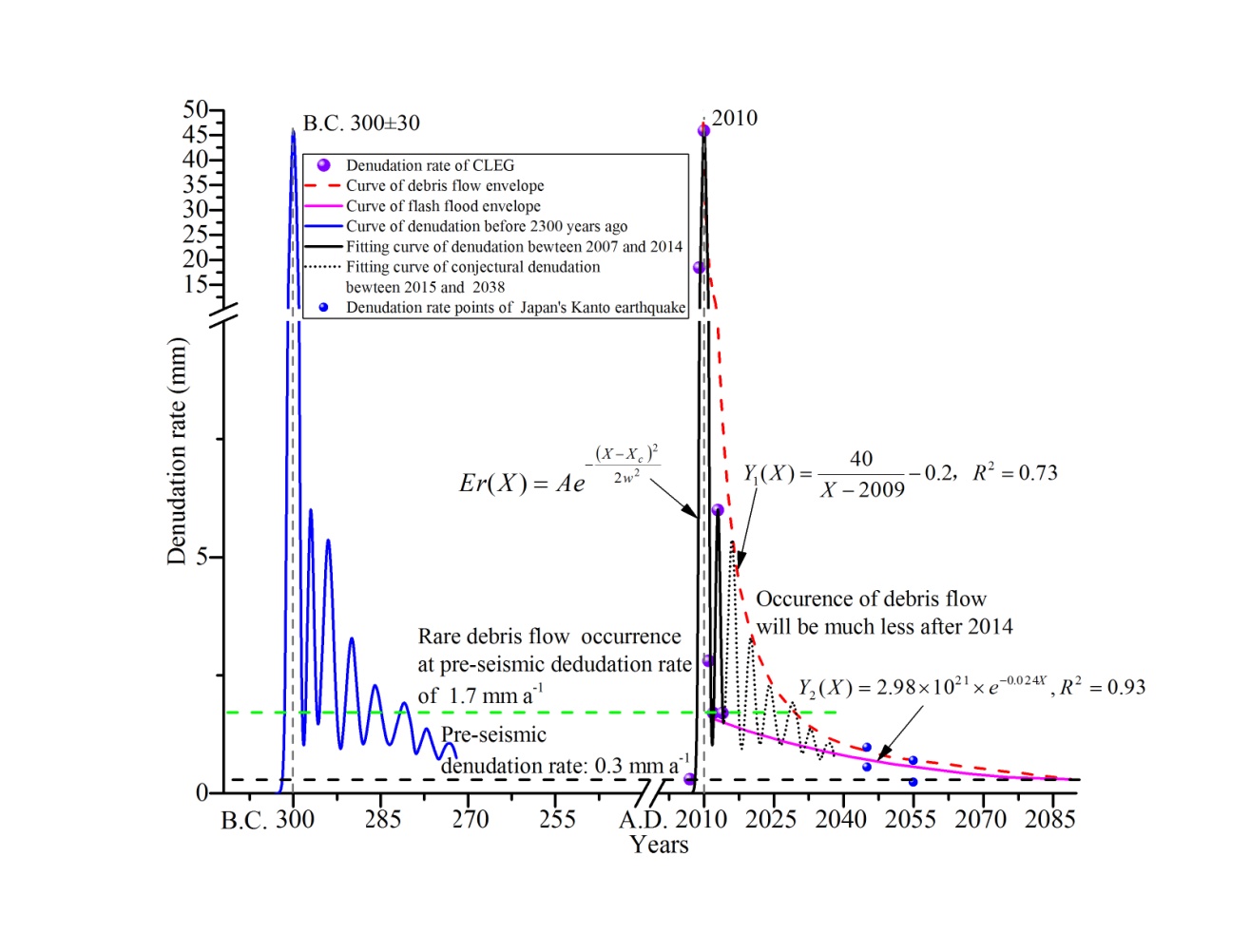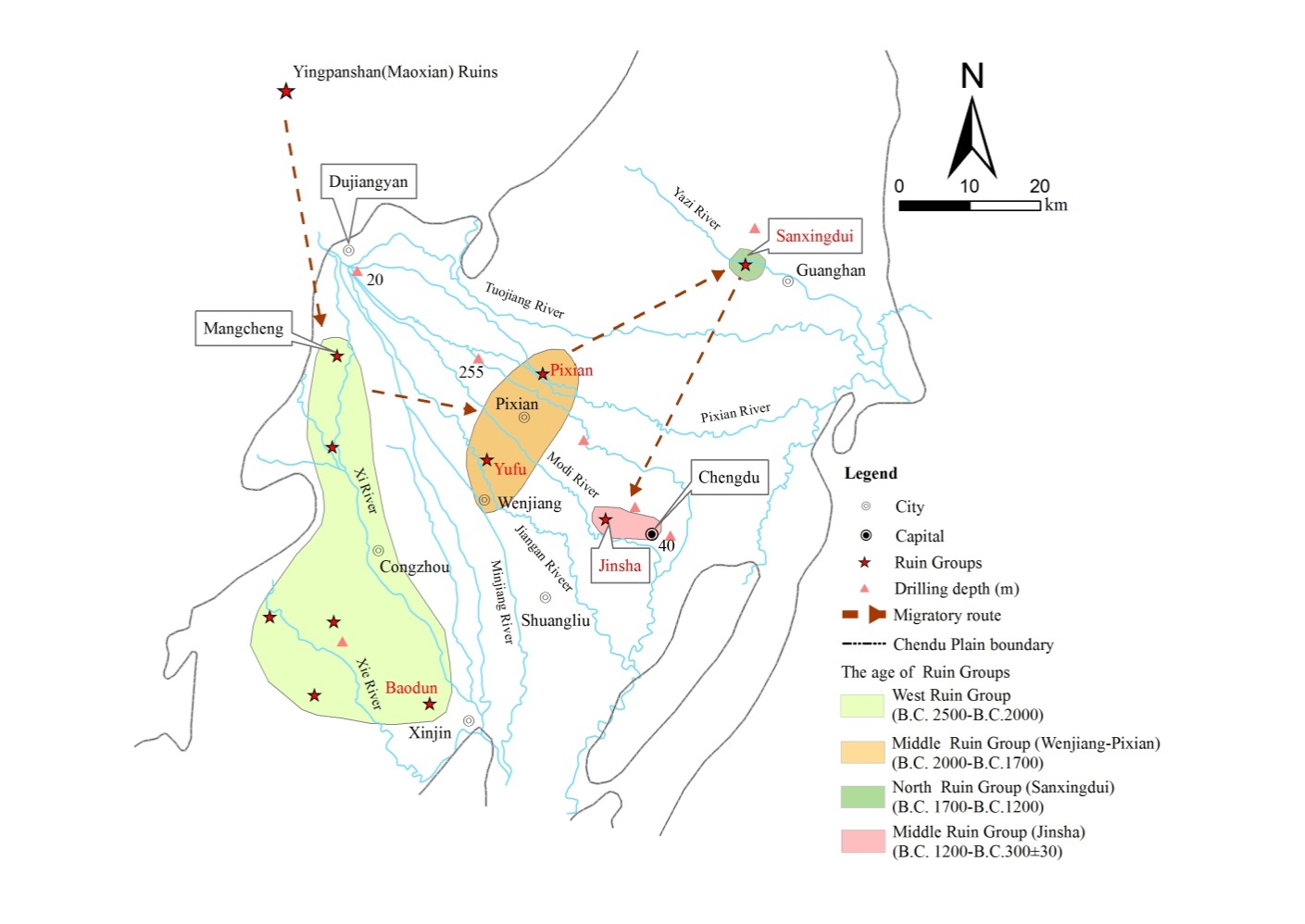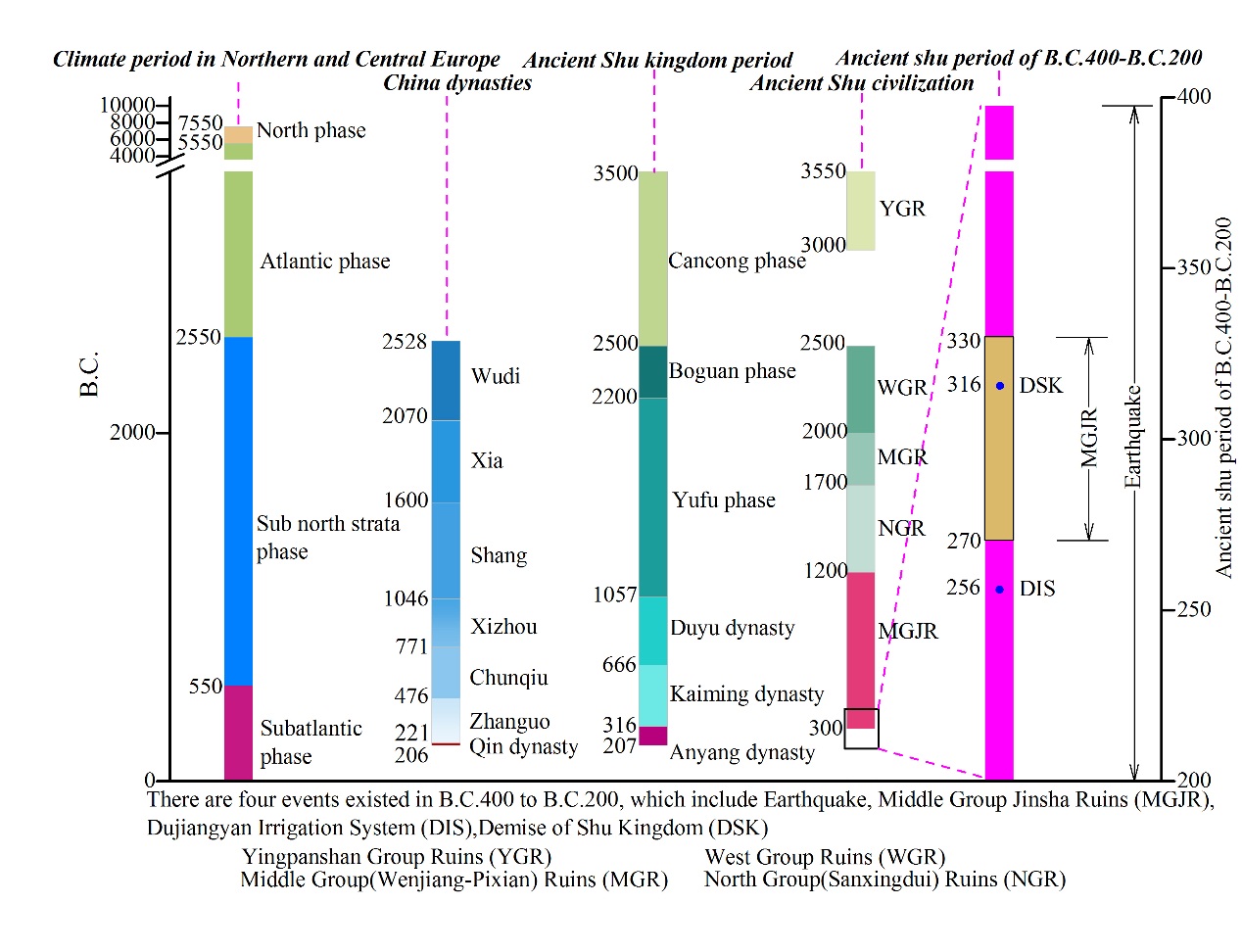Focus on how many years the secondary disasters will go on after the 5.12 Wenchuan earthquake, how long the denudation rate will return to the pre-earthquake level and how the disaster effect on human which is brought by the same type of earthquake is, the Longxi-Baisha River Basin was chosen as the research object, researcher CHEN Ningsheng investigated the amount of denudation triggered by specific flash flood and debris flow events from 2009 to 2014, compared the pre-seismic regional denudation rates and denudation characteristics of other seismically active mountain regions, studied the characteristics of the regional denudation processes and the evolution of mountain torrents and debris flow disasters, and also discussed the possibility of migration of the ancient city of Chengdu under the influence of a disaster.
The research reveals:(1) Regional denudation processes occurred in a wave-like process of initial increase then decline, with a peak exhibiting a hyperbolic attenuation trend. This trend indicates that the denudation rate in the Chengdu Longmenshan region is expected to return to the pre-seismic rate of 0.3 mm a-1 after 81 years. In 22 years after the earthquake (Year 2030), debris flow disasters are expected to be rare. (2) Disasters increased significantly in the Chengdu Longmenshan region after the Wenchuan earthquake, with an average of 29.5 people missing or dead per year (22 times greater than the pre-earthquake rate) and average economic losses of 192 million Yuan per year (1.6 times greater than the pre-earthquake rate. (3) The denudation process was jointly controlled by the quantities of loose solid material and precipitation after the Wenchuan earthquake. The amount of loose solid material influenced the extent of denudation, while vegetation coverage rates and soil consolidation determined the overall denudation trend in the region, and changes in precipitation led to denudation fluctuations. (4) The results can be used to analyze the relationship between the potential flash flood-debris flow disasters after earthquakes in the ancient Shu kingdom and changes in historical social settlements. The results can also be used to predict denudation processes and disaster risks from earthquakes in humid mountainous regions around the world, such as the southern slope of the Himalayas, Japan and the Taiwan mountains.
The study entitled Post-earthquake denudation and its impacts on ancient civilizations in the Chengdu Longmenshan region, China has been published online in Geomorphology.

Figure1. Process model of denudation rate evolution in the Chengdu Longmenshan earthquake region with time (Image by CHEN Ningsheng).

Figure 2. Map of ancient human migration routes in the Chengdu Plain (Image by CHEN Ningsheng).

Figure 3. The list of the ancient climate and the ancient civilization phase (Image by CHEN Ningsheng).
Contact:
Prof. CHEN Ningsheng
Institute of Mountain Hazards and Environment, Chinese Academy of Sciences
Chengdu, Sichuan, 610041, China
Tel: 86-28-85224993
E-mail: chennsh@imde.ac.cn
